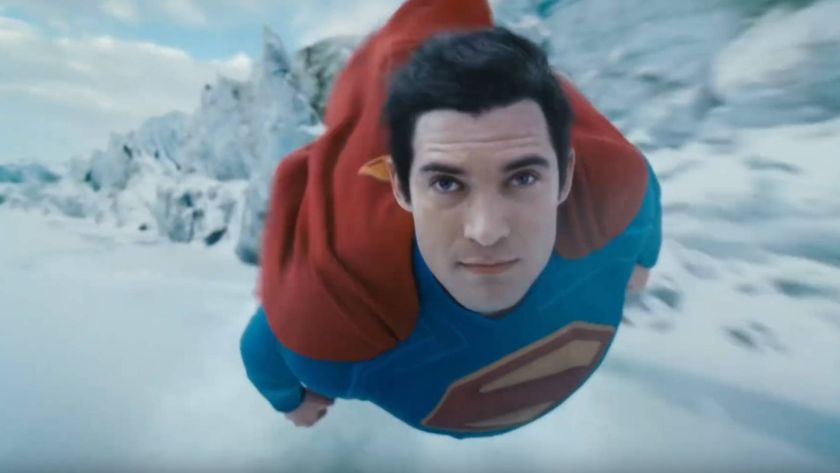30 Greatest Scorsese Film References
Marty’s film school is now in session…
Black Narcissus (1947)
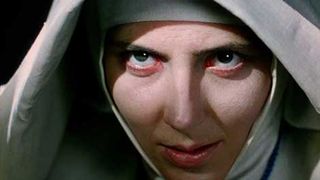
As Seen In: The Age Of Innocence (1993)
The Shot: Scorsese’s period romance is a burst of colour – often quite literally, with the screen flashing a solid block of red or yellow between shots.
“I was interested in the use of colour like brushstrokes,” says Marty, “it just didn’t seem right to fade to black, it had to be something rich in colour and texture, so I used fades to red and yellow.. In Black Narcissus there was a fade to orange when [ Deborah Kerr ] faints, and in Rear Window there was a similar effect when the flash bulbs went off. We spent a long time working out how long the bursts of colour should be on screen.”
Jules Et Jim (1962)
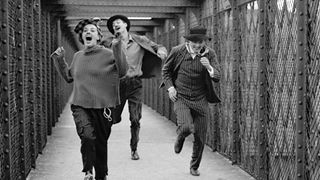
As Seen In: Goodfellas (1990)
The Shot: “As far back as I can remember I always wanted to be a gangster” – the opening of Goodfellas is as iconic as it is brutal – with a red-soaked flashback interrupted by a freezeframe and a voiceover.
“It was influenced by Jules Et Jim ,” says Scorsese, “What I loved about those Truffaut and Godard techniques from the early sixties was that narrative was not that important. You could stop the picture and say “Listen, this is what we’re going to do right now – oh, and by the way, that guy got killed – and we’ll see you later”
Marnie (1964)
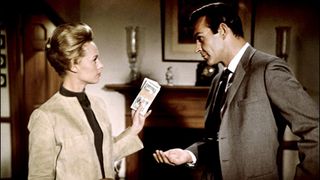
As Seen In: After Hours (1985)
The Shot: “After hours is to some extent a parody of Hitchcocks style,” says Scorsese of his underrated dark comedy, After Hours .
“The scene when Paul is running with the invitation in his hand – there’s a shot of the hand with the ground below – basically this refers back to a moment in Marnie where she’s holding the gun going to shoot the horse. When I first saw Marnie, that shot remained in my mind and I kept going back to watch the whole two hours just to see it again.”
Gone With The Wind (1939)
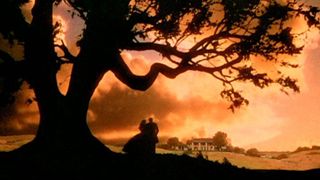
As Seen In: Alice Doesn’t Live Here Anymore (1974)
The Shot: The first time Scorsese found himself in a studio, he couldn’t resist playing tribute to every OTT set that had inspired him as a kid – with the prologue to Alice Doesn’t Live Here Anymore looking like something from the early days of colour.
“It was the first time in my movie career that I was able to build a proper set,” says Scorsese, “We tried for a combination of Duel In The Sun and Gone With The Wind in the William Cameron Menzies style of Invaders From Mars . We painted a red sunset that went 180 degrees around the entire stage, and we made up this little girl to look like Dorothy in The Wizard Of Oz .”
A Bigger Splash (1973)
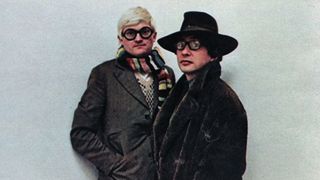
As Seen In: Taxi driver (1976)
The Shot: “We studied Jack Hazan’s A Bigger Splash for the head-on framing,” says Scorsese, pointing to Hazan’s arthouse David Hockney biopic as an unusual inspiration for his New York noir.
“Each sequence in the film – such as the shot of the grocery store before Travis Bickle shoots the black guy – each sequence begins with a shot like that, so before any moves you’re presented with an image like a painting.”
Arrival Of A Train At La Ciotat (1896)

As Seen In: Hugo (2011)
The Shot: The Lumière brothers were the Bruckheimer’s of their day – with their 1896 film famously causing audiences to run for their lives when they saw – for the very first time – a train hurtling towards them on screen.
Scorsese pays homage to this cinema milestone in the train derailment scene in Hugo – placing the shot at exactly the same angle (before reproducing the equally famous photograph of the 1895 wreckage at Montparnasse).
The Red Shoes (1948) (again)
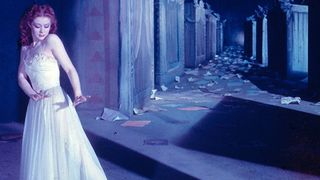
As Seen In: The Wolf Of Wall Street (2013)
The Shot: Another Red shoes reference – this time one of Marty’s favourites; a shot-match of Moira Shearer running down a spiral staircase that he’s managed to slip into more than one movie. Last seen in The Wolf Of Wall Street , it’s also recently turned up in Shutter Island and Hugo .
Sign up for the Total Film Newsletter
Bringing all the latest movie news, features, and reviews to your inbox
The Tales Of Hoffmann (1951)
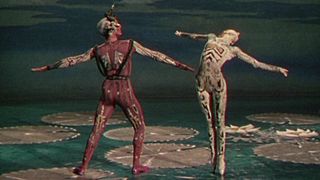
As Seen In: Taxi Driver (1976)
The Shot: Robert De Niro’s “I’m-probably-going-to-kill-you-but-I-haven’t-quite-decided-how” look didn’t just come out of nowhere – with Marty modelling it precisely on Robert Helpman’s expression in Powell and Pressburger’s opera, The Tales Of Hoffmann .
“When we were doing the close-ups for De Niros eyes, I shot these at 36 or 48 frames per second to reproduce the same effect that I’d seen in the Venetian episode of The Tales Of Hoffmann , when Robert Helpman is watching a duel on a gondala”
The Tales Of Hoffmann (1951) (again)
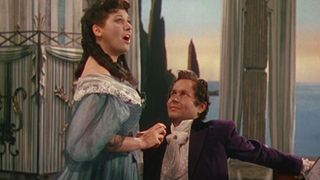
As Seen In: Goodfellas (1990)
The Shot: Yep, he used it again. Needing to nail another look of barely controlled violence, Scorsese went back to The Tales Of Hoffmann for the famous shot of De Niro leering over a bar in Goodfellas to the opening riff of Cream’s Sunshine Of Your Love.
To make things weirder, that means one of the most bad-ass moments in cinema was modelled on the guy who played the Child Catcher in Chitty Chitty Bang Bang …
Shoot The Piano Player (1960)
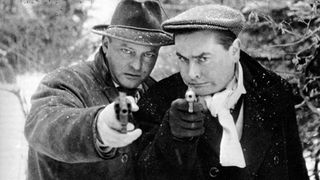
As Seen In: Mean Streets (1973)
The Shot: The powerhouse opening of Mean Streets – three overlapping shots, each one closer than the last, as Harvey Keitel hits the pillow to the strains of Be My Baby – is the best example of Marty’s favourite cine-quote.
“There are certain shots that Truffaut did,” says Scorsese, “that I will never get out of my system. There’s a shot in Shoot The Piano Player when the girl is pressing the door button, carrying the violin case. He cuts three times, coming closer each time. That shot’s in every picture I make, and I don’t know why”

